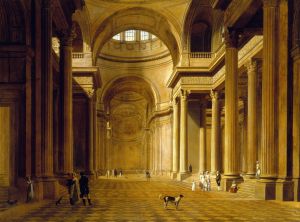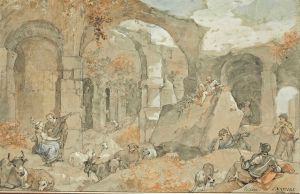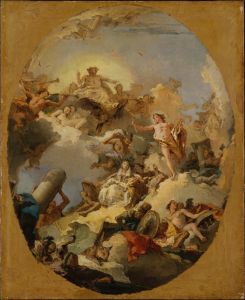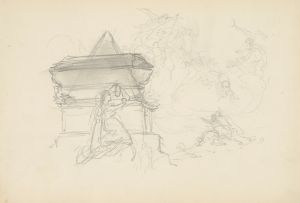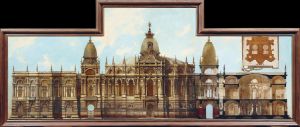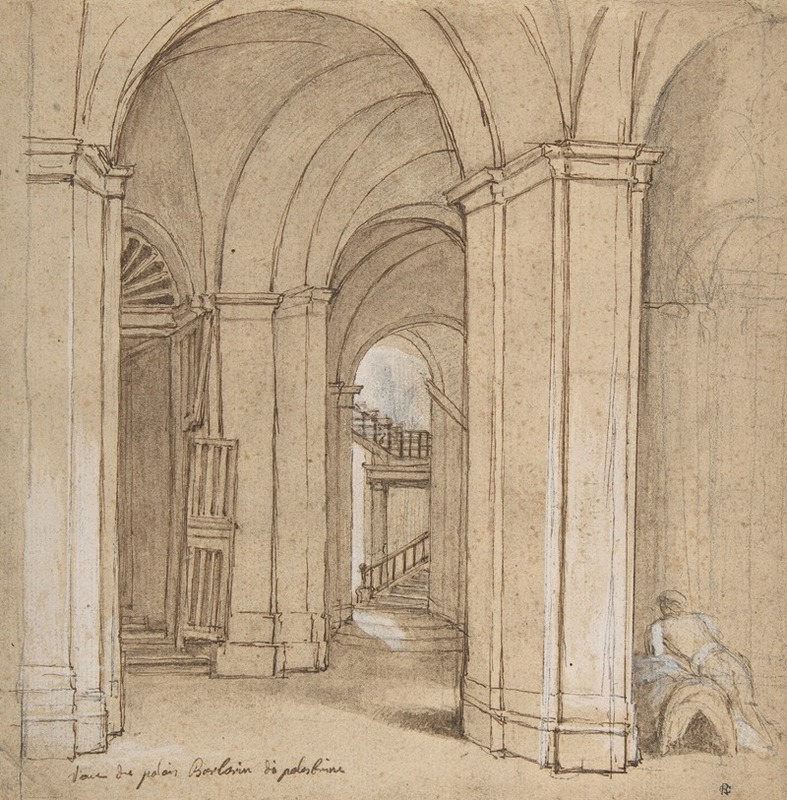
Staircase in the Palazzo Barberini, Palestrina
A hand-painted replica of Charles-Joseph Natoire’s masterpiece Staircase in the Palazzo Barberini, Palestrina, meticulously crafted by professional artists to capture the true essence of the original. Each piece is created with museum-quality canvas and rare mineral pigments, carefully painted by experienced artists with delicate brushstrokes and rich, layered colors to perfectly recreate the texture of the original artwork. Unlike machine-printed reproductions, this hand-painted version brings the painting to life, infused with the artist’s emotions and skill in every stroke. Whether for personal collection or home decoration, it instantly elevates the artistic atmosphere of any space.
Charles-Joseph Natoire was a prominent French painter of the 18th century, known for his contributions to the Rococo movement. He was born on March 3, 1700, in Nîmes, France, and trained under the tutelage of prominent artists such as Louis Galloche and François Lemoyne. Natoire's artistic career was marked by his adeptness in creating both religious and mythological scenes, as well as his skill in decorative arts, which made him a sought-after artist in his time.
One of Natoire's notable works is the painting "Staircase in the Palazzo Barberini, Palestrina." This piece is an example of his ability to capture architectural elements with a keen eye for detail and perspective. The Palazzo Barberini, located in Palestrina, Italy, is a historic palace known for its grandeur and architectural significance. While specific details about the painting itself are limited, it can be inferred that Natoire's work likely captures the elegance and intricate design of the staircase within this notable building.
Natoire's style is characterized by its lightness, elegance, and use of soft colors, which are hallmarks of the Rococo style. This movement was known for its ornate and decorative qualities, often featuring playful themes and a sense of movement. Natoire's work often included these elements, making his paintings visually engaging and rich in detail.
Throughout his career, Natoire held several prestigious positions, including the directorship of the French Academy in Rome from 1751 to 1775. This role allowed him to influence a new generation of artists and further cemented his reputation within the art world. His time in Rome also provided him with ample opportunity to study and draw inspiration from classical art and architecture, which likely influenced his depiction of architectural subjects such as the staircase in the Palazzo Barberini.
Natoire's contributions to art extended beyond his paintings; he was also involved in tapestry design and other decorative arts. His work in these areas demonstrated his versatility and ability to adapt his style to different mediums. Despite the changing tastes in art towards the end of his career, Natoire remained a respected figure in the art community until his death on August 23, 1777, in Castel Gandolfo, Italy.
In summary, Charles-Joseph Natoire's "Staircase in the Palazzo Barberini, Palestrina" reflects his mastery of the Rococo style and his ability to depict architectural elements with precision and elegance. While specific details about this particular painting are scarce, Natoire's broader body of work and his influence on the art world remain significant. His legacy is marked by his contributions to both painting and decorative arts, as well as his role in shaping the future of French art through his leadership at the French Academy in Rome.







